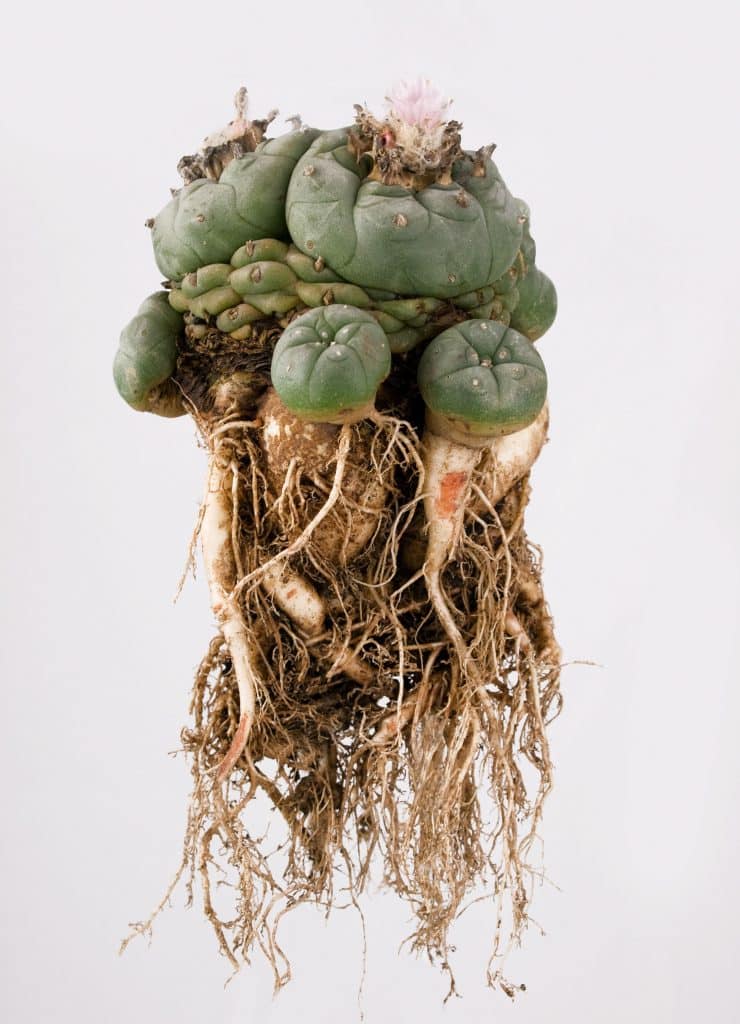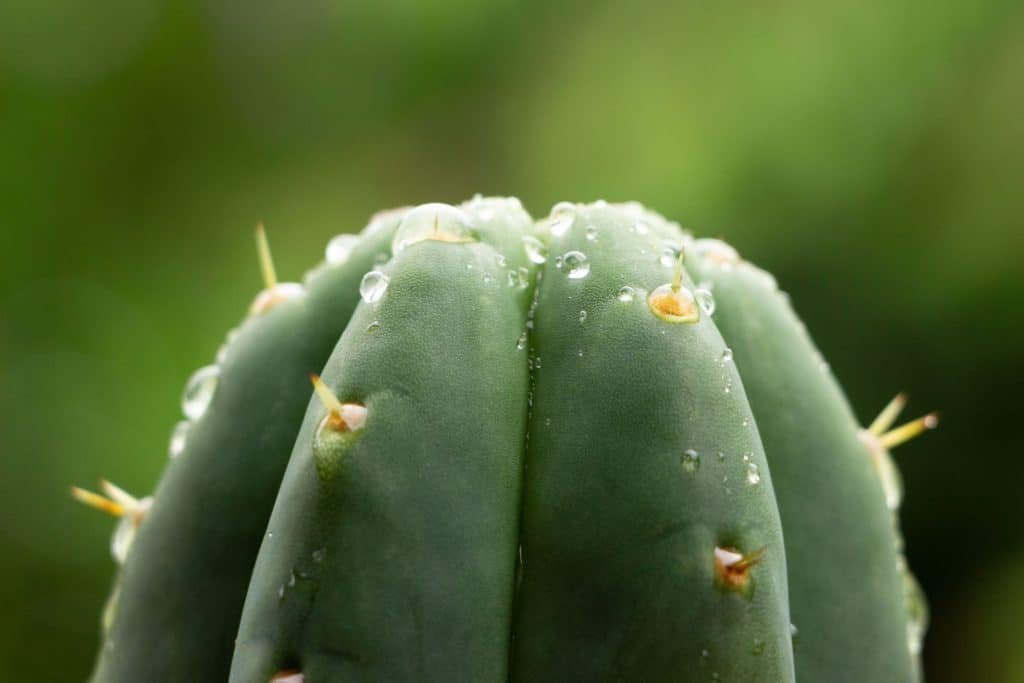The world of psychedelics is a huge place, and we’ve only investigated a portion of it. One of the main and most intense psychedelics from nature is the compound mescaline. While DMT, (and its derivatives magic mushrooms and bufotoxins), has gained prominence in this new psychedelic awakening, we’ve not heard as much about this other compound yet. However, it looks like it too can do some good for humanity. According to a 2021 mescaline study, this compound reportedly helps with psychiatric improvements and for making positive life changes.
Recent mescaline study highlights how the drug helps to improve the lives of those who use it. We’ll probably hear way more about it in the future. This news publication offers independent reporting on the growing cannabis and psychedelics spaces. Keep up with everything by signing up for The Cannadelics Weekly Newsletter, and get yourself in first place for all new product promotions.
What is mescaline?
Mescaline (3,4,5-Trimethoxyphenethylamine) is a naturally occurring psychedelic compound, unlike drugs like LSD and MDMA which are made in a lab. Mescaline joins other natural components like DMT, psilocybin mushrooms (also a form of DMT), and Salvia divinorum. It’s found in nature in the Peyote cactus (Lophophora williamsii), the Peruvian Torch cactus (Echinopsis peruviana), San Pedro cactus (Echinopsis pachanoi), and in the Cactaceae plant and Fabaceae bean families. It’s of the phenethylamine class of drugs, and like LSD and mushrooms, is serotonergic in how it works in the human brain.
Peyote has been used for ritualistic activities as far back as 5,700 years. Mescaline containing plants are found mainly in the South of North America and below, so mescaline use in history was done mostly by Native Americans in Mexico, and throughout South America.
In terms of modern use, mescaline was isolated from a peyote plant in 1897 by German chemist Arthur Heffter, and first synthesized by Ernst Späth in 1919. It was one of the first drugs used by the likes of Aldous Huxley, who went on to describe it as “The Doors of Perception” in a 1954 essay.

The drug produces a number of subjective effects, like hallucinogens, including both open and closed-eye visuals; distortion in time, vision and sound; introspective and conceptual thinking; ego loss; and euphoria. It’s actually considered more gentle, and more insight-producing, than other psychedelics
Much like other psychedelics, bad trips are experienced by some users, and this can include anxiety, paranoia, delusions, and psychosis. However, bad trips aside, mescaline has never shown to be addictive or physiologically toxic. It’s not as common as other drugs because of the time to grow it and the cost of production. Often the term ‘mescaline’ or ‘synthetic mescaline’ simply denotes other non-mescaline compounds, or derivatives like 2C-B.
The mescaline study
In 2021, the study Naturalistic Use of Mescaline Is Associated with Self-Reported Psychiatric Improvements and Enduring Positive Life Changes, was published. The purpose of the study was to measure mescaline’s psychotherapeutic potential. This was done through the administration of a questionnaire to adults who had reported mescaline use. The survey was anonymous, and there were 452 respondents, all of whom reported using mescaline in natural settings.
The survey covered questions about any benefits in mental health that respondents thought were attributable to mescaline. Study investigators assessed self-rated differences in depression, anxiety, post-traumatic stress disorder, and alcohol and drug use disorders.
Researchers found that of the subjects who reported histories of these conditions, 68-86% described improvements in their own opinion following a more memorable experience with the drug. Researchers also found that those who reported such improvements, also reported trips which were more likely to have “mystical-type, psychological insight, and ego dissolution effects”, more so than their counterparts who did not report psychiatric improvement.
Subjects often rated a mescaline experience as one of the top five experiences in their lives, in fact 35-50% did. It was also found that when there were more intense experiences of insight during a trip, that there was an increased rate of reporting on improvement in depression, anxiety, and drug use disorder symptoms, in the study.

The authors concluded, “Additional research is needed to corroborate these preliminary findings and to rigorously examine the efficacy of mescaline for psychiatric treatment in controlled, longitudinal clinical trials.”
More research coming…
It’s not shocking that research efforts are increasing around mescaline, as its yet another untapped drug source that looks to provide benefits for consumers; especially those of a psychological nature. The company MindMed, publicly traded under (Nasdaq: MNMD) (NEO: MMED) (DE: MMQ), announced last year that it had been approved by a local Swiss ethics committee to begin trials for a mescaline study. The purpose of the study is to evaluate “the acute effects of different doses of mescaline and the role of the serotonin 5-HT2A receptor in mescaline-induced altered states of consciousness.”
The location for trials is the University Hospital Basel Liechti Lab, in Basel, Switzerland, and the study was slated to begin already a year ago, so its underway now. The investigation will look at subjective effects of the drug at different doses with the use of modern psychometric measurements. This, as well as exploring how the 5-HT2A receptor reacts in mescaline-induced states of consciousness, by using a 5-HT2A receptor blocker called ketanserin before high doses are given.
The study is a double-blind, placebo-controlled, cross-over study, which contains six separate dosing possibilities. Everything is randomized so neither subjects nor researchers know which exact medication (or placebo), each participant gets.
MindMed President Dr. Miri Halperin Wernli put it this way: “At present there are no modern studies that we are aware of using validated psychometric outcome measures that directly compare different doses of mescaline. With our rigorous clinical trial, we aim to characterize the subjective effects of different doses of mescaline and provide a description of the acute mescaline effects to help clarify the involvement of the 5-HT2A receptor in mescaline-induced altered states of consciousness in healthy people.”
She continued, “We believe the drug will have a powerful effect on enhancing the communication between different parts of the brain in unique ways that are otherwise inaccessible to the conscious mind. As we move forward, further studies on patient populations will be targeted to help us distinguish the relationship between the drug-induced experience and its integration into the psychotherapeutic process.”

She concluded, “The hope is that this will then allow a better understanding of the behavioral changes and the unique effect of these powerful drugs on neuroplasticity.”
Mindmed for its part is a Swiss biotech company that is already knee-deep in psychedelic research. The company is currently investigating how LSD and MDMA can work together, and developed MM-110, a synthetic version of the natural compound ibogaine.
Mescaline preparation
Cacti like peyote and San Pedro are popular mescaline plants, but they’re not as easy as eating a mushroom, or smoking weed. They involve a lot more time and work. The growing process for peyote, for example, is not short, and can take over 10 years for the plant to reach maturity, highlighting why other plant compounds are more popular. In traditional cultures, when dealing with peyote, the top of the plant is cut down to ground level, leaving just large tap roots, which then grow new heads. The heads are the important part, and after they’re cut off, they’re dried into disc-shaped buttons that the user can chew. Alternately, the heads are soaked in water, which the user can drink.
The more modern process is to grind the head into a powder which is put in capsules. This is preferable to some since peyote has a bitter taste which makes it difficult to get the plant down directly. The average mescaline head button has about 25mg of mescaline and is 76mm (3″) in length. Humans generally consume between 200-400mg of mescaline sulfate, or 178-356mg of mescaline hydrochloride
What’s the difference between mescaline sulfate and mescaline hydrochloride? They’re both mescaline salts, but which you end up with depends on the extraction technique used. For basic instructions on extraction processes, look here.
Conclusion
10 years ago no one was talking about CBD vs THC, or any of the other cannabinoids that came into prominence in the last few years. But we sure talk about them now. The same is with psychedelics like mescaline. It might not be the most talked about drug at the moment, but as the psychedelics industry expands, there’s no doubt that in a few years from now, it’ll be the next big thing.
Welcome all! We appreciate you making it to Cannadelics.com, the premiere internet location for wide-ranging, independent coverage of the cannabis and psychedelics landscapes. Read-thru the site frequently to stay on top of all movements in the industry, and subscribe to The Cannadelics Weekly Newsletter, to ensure you never miss a single thing.









